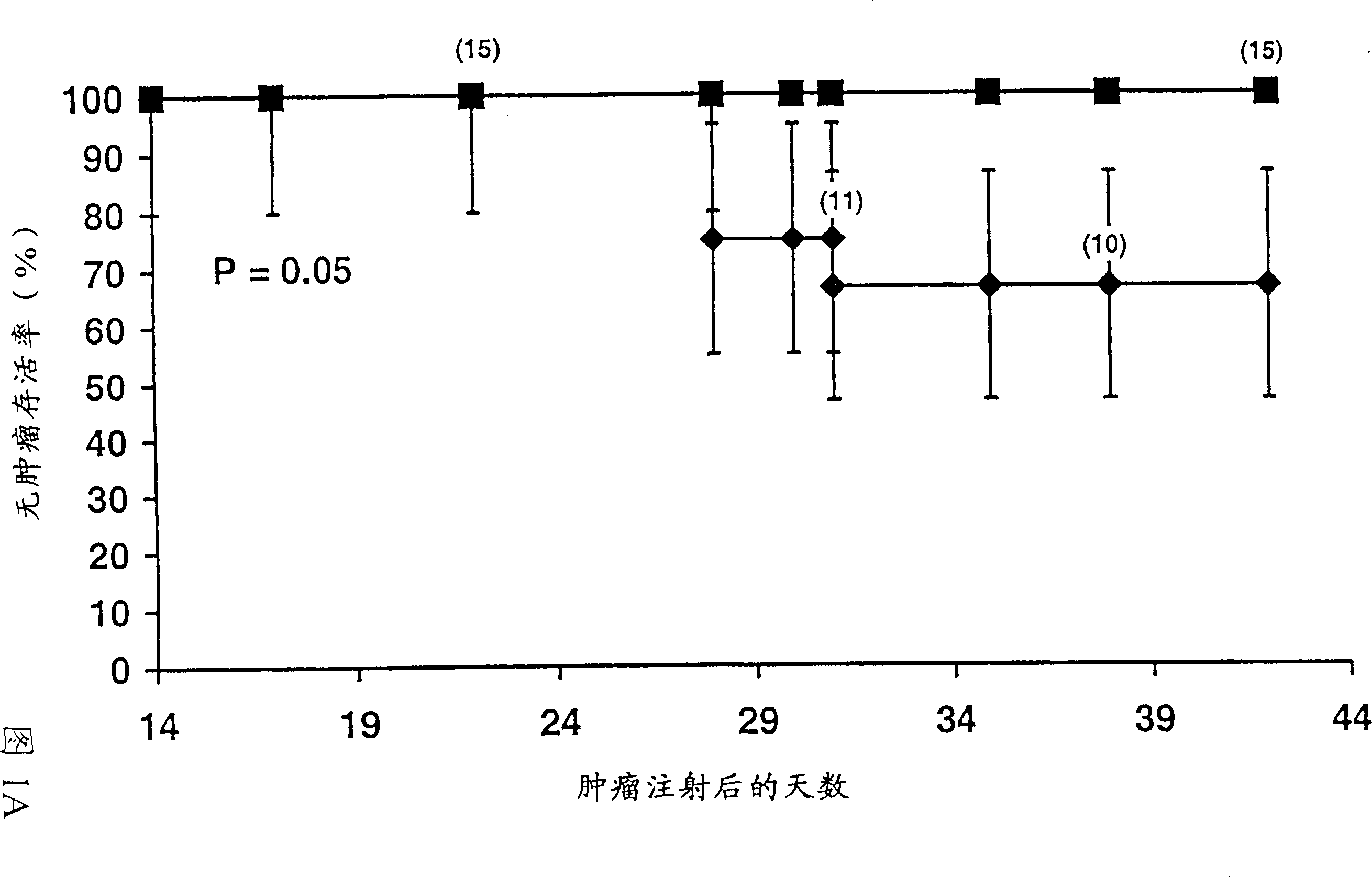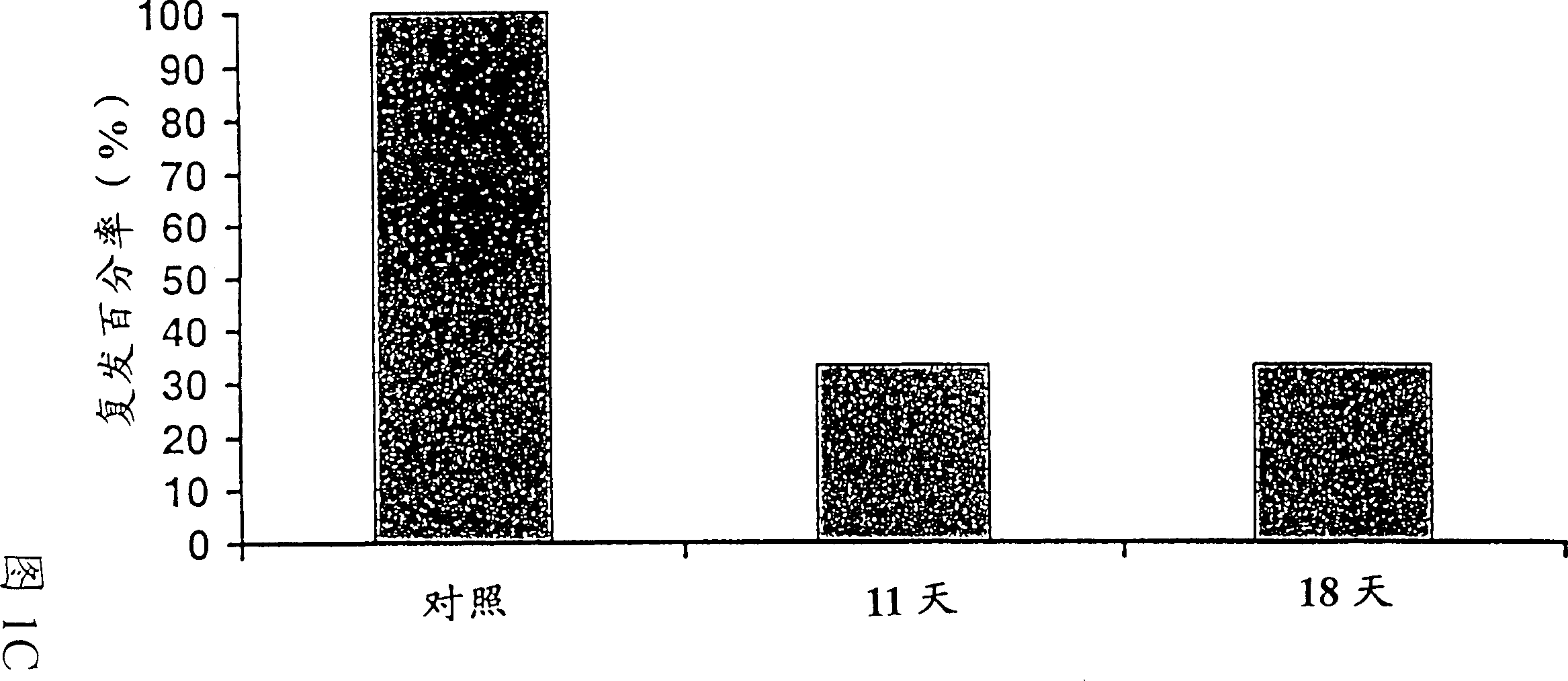Combinations of receptor tyrosine kinase inhibitor with a1-acidic glycoprotein binding organic compound
A technology of tyrosine kinase and acid glycoprotein, which is applied in the field of pharmaceutical preparations and can solve problems such as increasing AGP levels and drug resistance
- Summary
- Abstract
- Description
- Claims
- Application Information
AI Technical Summary
Problems solved by technology
Method used
Image
Examples
Embodiment 1
[0283] Example 1: STI571 potency correlates with initial tumor burden
[0284] Fifty million KU812 cells were injected subcutaneously into nude mice. Treatment was started after 1, 8 and 15 days, respectively, in the presence of approximately 50 million, 300 million and 1 billion leukemic cells (groups I to III). Although tumor regression was observed in all groups, cure was achieved only in the first two groups. Figure 1A shows the results of a representative experiment. While all animals in group I were reproducibly cured, mice in group II relapsed at rates between 33% and 40%; no cure was observed in group III. Relapses usually occurred 1 to 3 weeks after discontinuation of treatment. Figure 1B represents the combined results of 3 different experiments. There is a clear correlation between the amount of tumor present at the start of treatment and the outcome of treatment. One possible explanation for these results is that STI571 was not administered for long enough in ...
Embodiment 2
[0285] Example 2: Recurrent tumors exhibit resistance in vivo but retain sensitivity to STI571 in vitro
[0286]Animals showing recurrent tumors were re-treated with the same STI571 treatment program (11 day dosing schedule). Treatment begins when the tumor becomes visible again. Figure 2 shows a representative assay. Clearly, recurrent tumors responded weakly to the new treatment and eventually began growing similarly to tumors from untreated animals (dash line). Although leukemia cells are resistant to STI571 in vivo, their intrinsic sensitivity to STI571 is unknown. To investigate this question, tumors were excised from drug-resistant animals, cell suspensions were prepared and cells were plated in culture and the in vitro sensitivity to STI571 was determined within 24-48 hours as previously described (le Coutre P et al., Journal of the National Cancer Institute, Vol. 91, pp. 163-168, 1999). Figure 3 represents the results obtained from two such tumors. Apparently, leu...
Embodiment 3
[0287] Example 3: Plasma levels of STI571 in relapsed mice
[0288] One possible explanation for the results reported above resides in the increased metabolism of STI571 in pretreated animals, and the resulting low STI571 plasma levels. To investigate this question, tumor-bearing mice pretreated with STI571 or not (control) were sacrificed 0.5, 2.0 and 5.0 hours after acute treatment with STI571 and total plasma STI571 concentrations were determined by HPLC. The results are presented in Figure 5. Control and pretreated animals reached similar plasma levels at 30 minutes, and STI571 levels declined more rapidly in control animals compared to pretreated mice (p<0.01). Concentrations within tumors showed the opposite, with tumors from pretreated animals containing lower STI571 concentrations at all time points, which reached statistical significance at the 5 h time point. These results did not confirm our hypothesis and even showed that resistant animals maintained high STI571 ...
PUM
 Login to View More
Login to View More Abstract
Description
Claims
Application Information
 Login to View More
Login to View More - R&D
- Intellectual Property
- Life Sciences
- Materials
- Tech Scout
- Unparalleled Data Quality
- Higher Quality Content
- 60% Fewer Hallucinations
Browse by: Latest US Patents, China's latest patents, Technical Efficacy Thesaurus, Application Domain, Technology Topic, Popular Technical Reports.
© 2025 PatSnap. All rights reserved.Legal|Privacy policy|Modern Slavery Act Transparency Statement|Sitemap|About US| Contact US: help@patsnap.com



